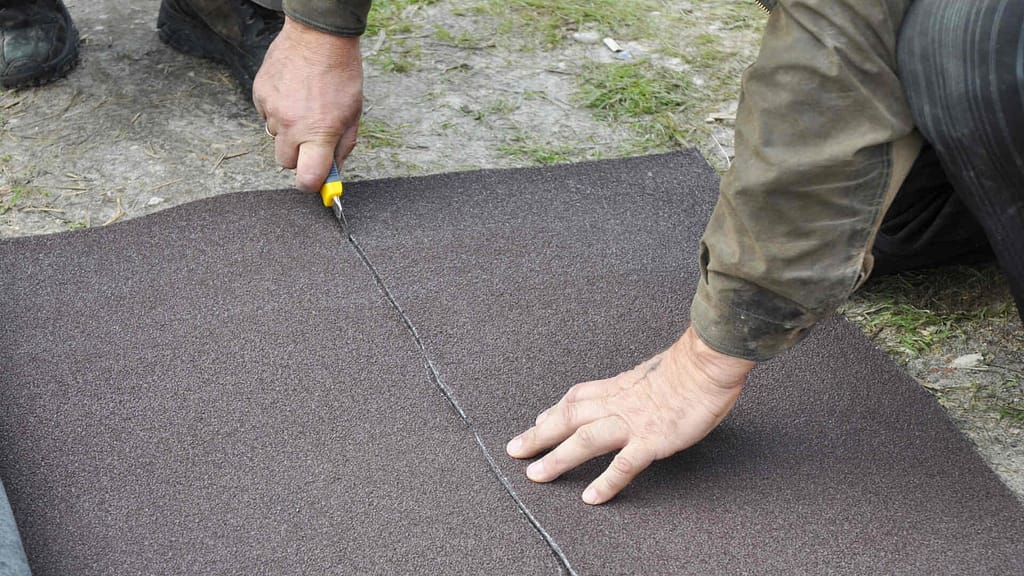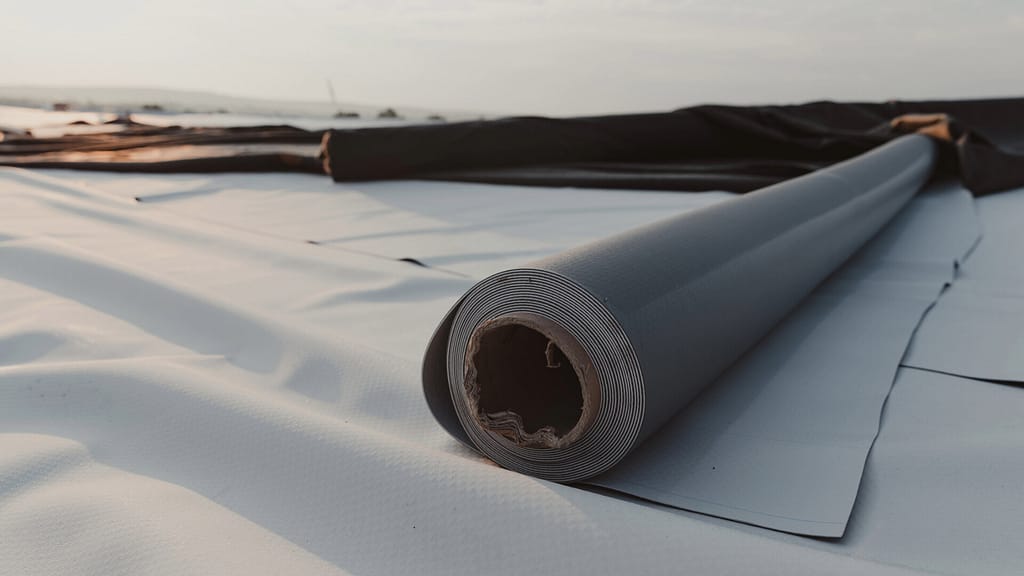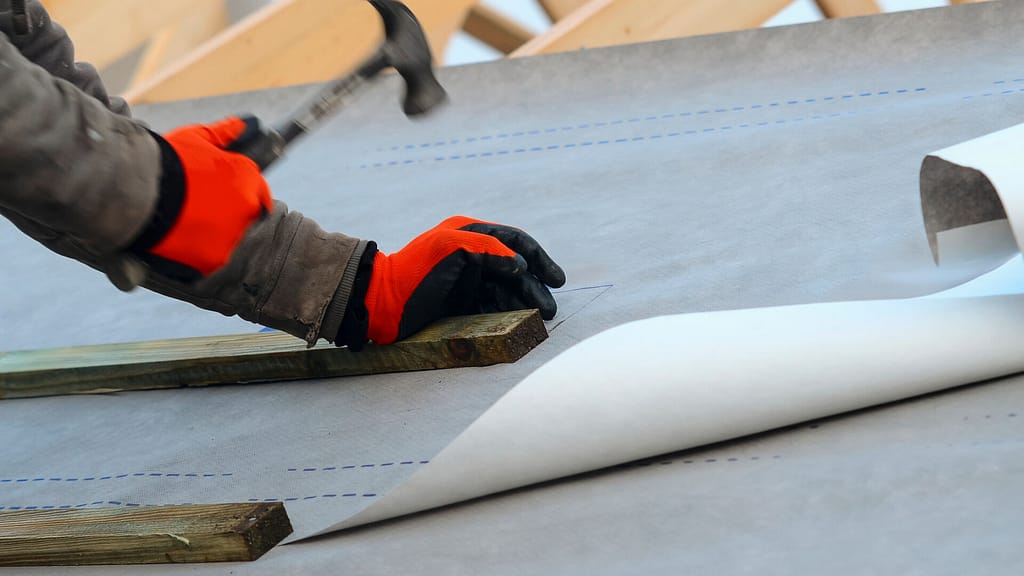The longest lasting roof underlayment is typically self-adhering membranes, which can last up to 50 years. These premium options offer superior waterproofing and durability, making them ideal for extreme climates and homeowners seeking long-term protection.
Table of contents
What is Roof Underlayment?
Roof underlayment is a protective barrier that sits between your roof deck and the shingles, offering an extra layer of protection against the elements. Think of it as the last line of defense before water reaches the interior of your home. This material ensures that your roof remains watertight, even in harsh weather conditions.
Importance of Roof Underlayment
Why is roof underlayment so important? Without it, your roof would be much more vulnerable to leaks, moisture buildup, and even wind damage. It helps prevent water from seeping into your home and causing issues like mold or wood rot. In essence, it extends the life of your entire roofing system, making it a critical component of your roof’s overall performance.
Types of Roof Underlayment and Their Lifespans

Not all roof underlayment are created equal. Different materials offer varying levels of protection and durability. In this section, we’ll break down the most common types of roof underlayment and discuss how long each typically lasts.
Asphalt-Saturated Felt
Asphalt-saturated felt, commonly known as roofing felt, is one of the most traditional types of underlayment. It’s made from organic or fiberglass material, which is then saturated with asphalt to make it water-resistant.
- Lifespan: Generally lasts around 15-20 years.
- Pros: Affordable, easy to install, widely available.
- Cons: Less durable than other options, can tear or wrinkle.
Rubberized Asphalt
Rubberized asphalt is a more modern and durable option. It often comes with a peel-and-stick backing, which makes it easy to apply and ensures a strong, waterproof seal.
- Lifespan: Can last up to 30 years or more.
- Pros: Superior waterproofing, self-sealing, great for areas prone to heavy rain or ice.
- Cons: More expensive than traditional felt.
Synthetic Underlayment
Synthetic underlayment is becoming increasingly popular due to its durability and lightweight nature. It’s made from polyethylene or polypropylene, which makes it resistant to tearing and moisture.
- Lifespan: Typically lasts 25-40 years.
- Pros: Lightweight, durable, resistant to UV rays and moisture.
- Cons: Higher upfront cost.
Self-Adhering Membranes
Self-adhering membranes are a premium underlayment option, offering excellent waterproofing and durability. They are often used in high-end roofing systems and in areas prone to extreme weather.
- Lifespan: Can last 30-50 years.
- Pros: Superior adhesion, excellent waterproofing, ideal for extreme climates.
- Cons: High cost, requires professional installation.
Factors Affecting the Longevity of Roof Underlayment
The lifespan of your roof underlayment isn’t just about the material itself. Several factors can impact how long it lasts. Understanding these factors can help you make the best choice for your home and ensure your roof remains in top shape for years to come.
Environmental Conditions
The climate where you live plays a big role in how long your roof underlayment lasts. In areas with extreme weather—like heavy rain, snow, or high winds—your underlayment might wear out faster. UV exposure from the sun can also break down the material over time, especially if the underlayment is exposed during installation.
Installation Quality
Even the best underlayment won’t last if it’s not installed properly. Poor installation can lead to wrinkles, tears, or gaps that allow water to seep through. It’s important to have your underlayment installed by experienced professionals who understand the nuances of the material and how to apply it correctly.
Maintenance and Inspection
Regular maintenance and inspections can greatly extend the life of your roof underlayment. Checking for any signs of wear, damage, or leaks can help you address small issues before they become big problems. Keeping your roof clean and free of debris also helps prevent unnecessary wear and tear on the underlayment.
Choosing the Longest Lasting Roof Underlayment

When it comes to choosing the right underlayment, it’s not just about picking the longest-lasting option. You’ll need to consider factors like cost, climate, and even the type of roofing material you’re using. In this section, we’ll guide you through the key considerations to help you make an informed decision.
- Cost vs. Longevity
- It’s important to balance the upfront cost of your underlayment with its expected lifespan. While cheaper options might save you money initially, they often don’t last as long, leading to more frequent repairs or replacements. Investing in a higher-quality underlayment might cost more upfront, but it can save you money in the long run by lasting longer.
- Climate Considerations
- The climate where you live should heavily influence your choice of underlayment. In areas with heavy rainfall, snow, or extreme temperatures, opting for a more durable and waterproof underlayment like rubberized asphalt or synthetic options is a smart move. On the other hand, if you live in a milder climate, traditional felt might be sufficient.
- Manufacturer Warranties
- Don’t overlook the importance of manufacturer warranties when choosing your underlayment. A good warranty can provide peace of mind, ensuring that you’re covered in case of material defects or premature wear. Be sure to read the fine print and choose a product with a warranty that matches your needs.
Hiring a Professional Roofer

Choosing the right roof underlayment is crucial, but ensuring it’s installed correctly is just as vital. That’s where finding the right roofer becomes essential. A skilled roofer can guide you in selecting the best materials for your home and ensure everything is installed to last.
Instant Roofer make it easy to find a roofer in your area who can get the job done right. And if you’re planning a roof replacement, our roof replacement cost calculator can quickly give you an accurate estimate, helping you plan your project with confidence.
Conclusion
In conclusion, choosing the right roof underlayment is key to keeping your roof strong and long-lasting. There are different types of underlayment available, each with its own strengths and weaknesses. Whether you choose asphalt-saturated felt, rubberized asphalt, synthetic underlayment, or self-adhering membranes, it’s important to pick one that fits your budget, climate, and roofing needs.
Making sure your underlayment is installed correctly is just as important as choosing the right material. A professional roofer can help ensure that your underlayment is put in place properly, giving your roof the best chance to last as long as possible. By taking the time to choose the right underlayment and working with a skilled roofer, you can protect your home and enjoy peace of mind for years to come.
Fact checked by Adrian Catolico – 9/3/2024

